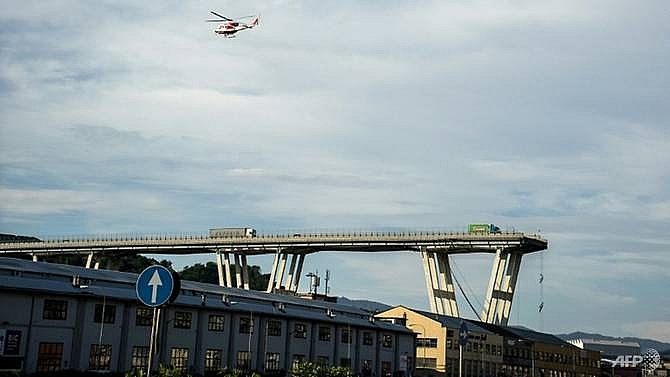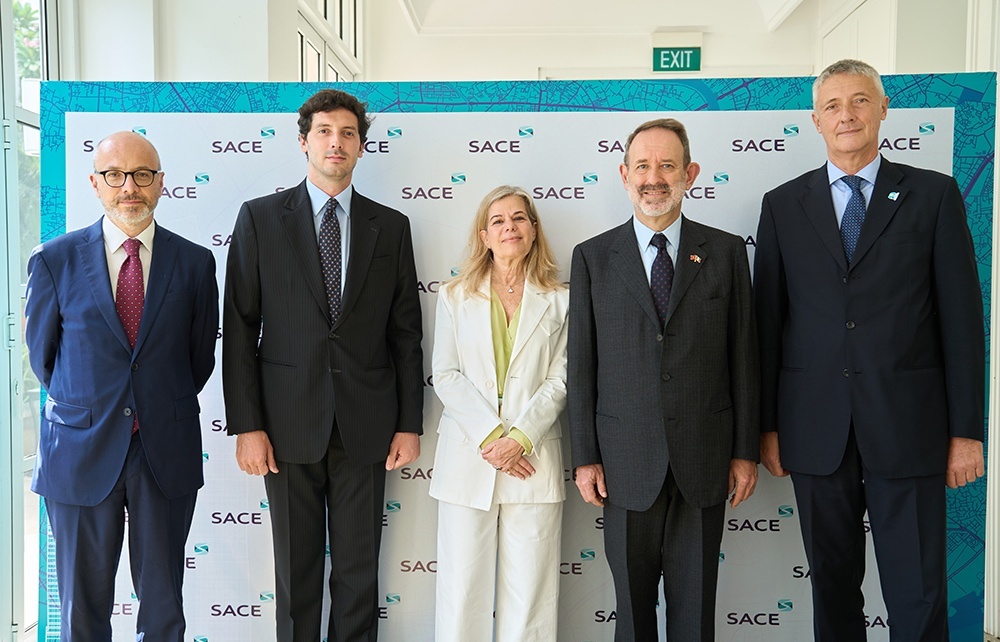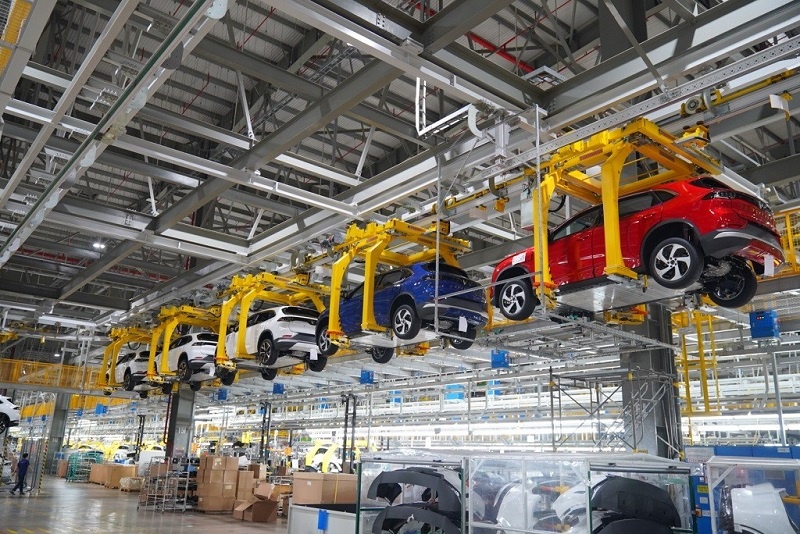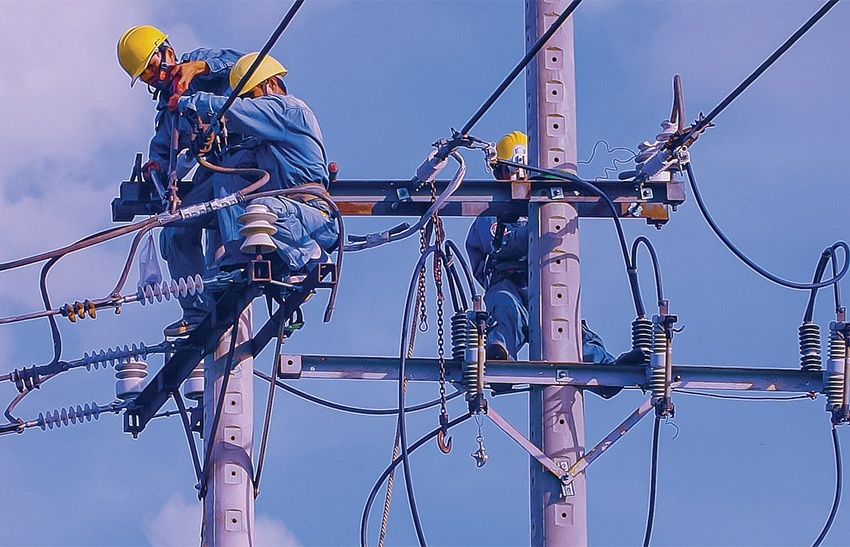Genoa bridge collapse a disaster 'waiting to happen'
 |
| The Morandi motorway bridge, part of which collapsed, has been riddled with structural problems since its construction in the 1960s. (AFP/FEDERICO SCOPPA) |
CELEBRATED DESIGNER
The Morandi bridge was built between 1963 and 1967. It has a maximum span of 219 metres, a total length of 1.18 kilometres, concrete piers (vertical structures that support the arches of a bridge) that reach 90 metres in height.
The technology of pre-stressed reinforced concrete used in the construction was the hallmark of its designer, the celebrated Italian engineer Riccardo Morandi, who died in 1989.
READ: What we know about the Genoa bridge collapse Dubbed patent "Morandi M5", he had used the technology for other works, including a wing of the Verona Arena in 1953.
This technique also characterises another, even longer and just as problematic Morandi bridge: the 8.7-kilometre long General Rafael Urdaneta Bridge that spans the bay of Maracaibo, Venezuela, and was completed in 1962.
'WAITING TO HAPPEN'
On Tuesday specialist engineering website "Ingegneri.info" published a piece that highlighted how the bridge had always presented "structural doubts", calling it "a tragedy waiting to happen".
Lending support to the website was Antonio Brencich, a professor of reinforced concrete construction at the University of Genoa, highlighting the constant maintenance the bridge needed.
READ: Dozens killed in Italy motorway bridge collapse 'tragedy' "It was affected by extremely serious corrosion problems linked to the technology that was used (in construction). Morandi wanted to use a technology that he had patented that was no longer used afterwards and that showed itself to be a failure," said Brencich to Radio Capitale,
Brencich has long been a critic of the bridge. In 2016 he spoke with "Ingegneri.info" about construction going over budget and poor calculations over concrete viscosity that led to an uneven road surface which wasn't fully corrected until the 1980s.
At the time of the accident, maintenance work was in progress.
TENDER FOR WORK
Economic news agency Radiocor reports that Italy's motorway agency had recently launched a €20-million tender for work on the viaduct.
The tender provided for a strengthening of the bridge's pier cables, including those of pier nine, the one that collapsed on Tuesday.
Notwithstanding the importance of a road that sees 25 million vehicles pass along it every year, the demolition of the bridge was being studied as far back as 2009.
AT RISK
"Ingegneri.info" says that bridges like the Morandi viaduct should have a lifespan of at least a century, but the structure has been the subject of major maintenance work in the years after its completion, in particular to repair cracks and combat degradation of the concrete.
In the early 2000s the suspension cables put in place in the 1980s and 1990s were replaced.
"Fifty years ago, we had unlimited confidence in reinforced concrete, we thought it was eternal, but now we know that it only lasted a few decades," Diego Zoppi, former president of the Genoa branch of the order of architects, told reporters on Tuesday.
Zoppi warns that it is impossible that similar tragedies won't happen again without serious work on infrastructure built post-World War II.
"The Italy built in the 1950s and 1960s is in urgent need of renovation. The risk of collapses is underestimated, the works built at that time are coming to an age when they are at risk."
What the stars mean:
★ Poor ★ ★ Promising ★★★ Good ★★★★ Very good ★★★★★ Exceptional
Related Contents
Latest News
More News
- ESG implementation spurs bank progress (November 18, 2024 | 13:37)
- Green-digital transition must start with proper mindset (November 13, 2024 | 16:49)
- New Zealand shares sustainable development experience with Vietnam (November 13, 2024 | 15:55)
- Vietnam on the verge of green industrial revolution (November 12, 2024 | 15:57)
- VIR sustainable development conference opens in Hanoi (November 12, 2024 | 09:42)
- Taking the lead in dual transition for a greener Vietnam (November 11, 2024 | 17:00)
- Vietnamese consumers careful amid economic volatility (November 11, 2024 | 13:55)
- Quality must come first in chip mission (November 11, 2024 | 10:33)
- Vietnam's digital economy estimated to reach $36 billion in 2024 (November 07, 2024 | 13:52)
- Authorities looks to tackle influx of cheap foreign goods (November 07, 2024 | 10:44)




 Tag:
Tag:





















 Mobile Version
Mobile Version